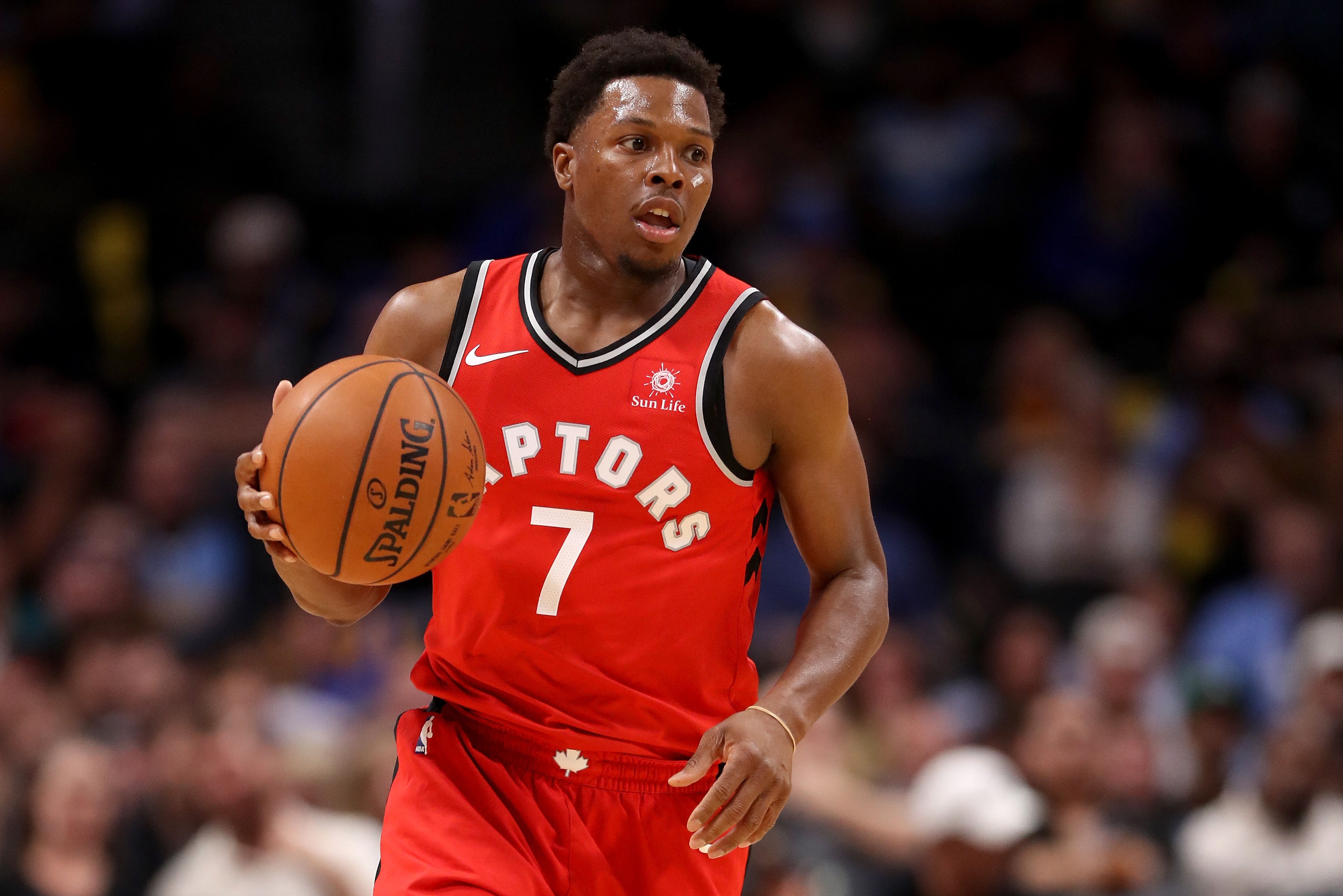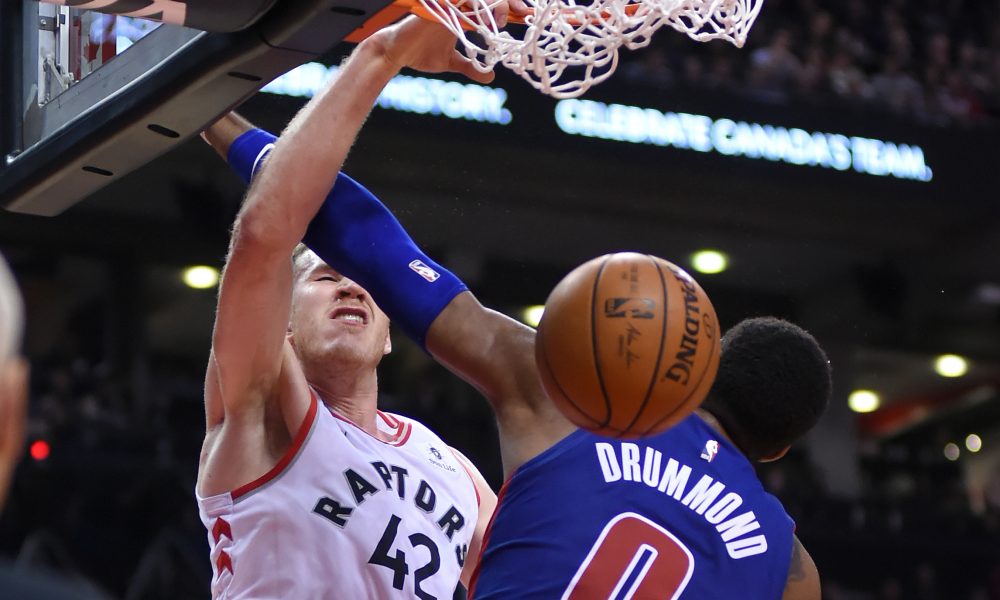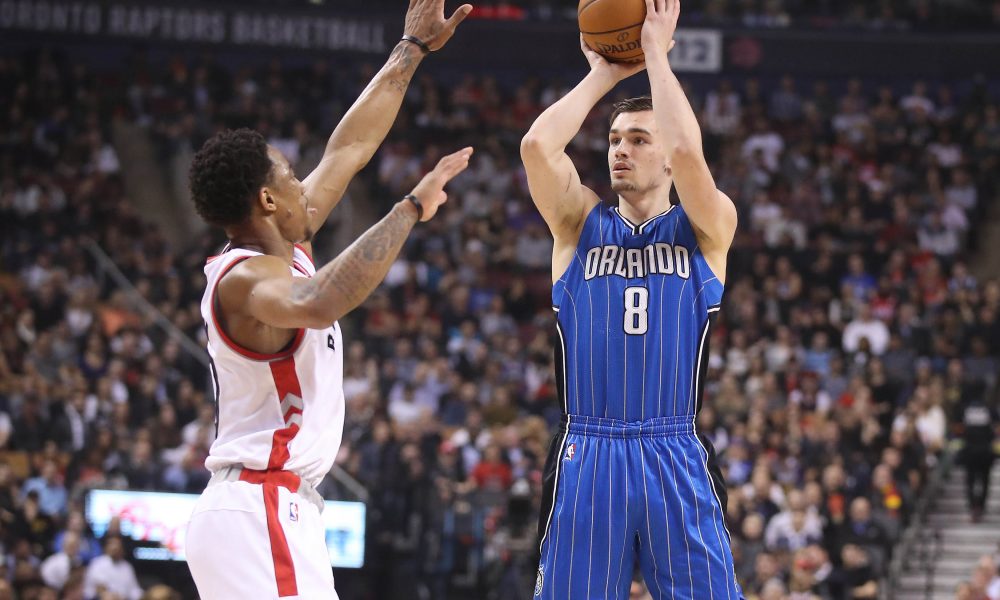There is a lingering criticism that buzzes around the head of Kyle Lowry, brought on by talking heads and the quick-to-judge section of NBA Twitter: He can’t lead a team in the playoffs. Heck, he can’t even play well in the playoffs.
He can’t. He can’t. He can’t.
Last regular season, Lowry was the belle of the ball. He put up great numbers (including career-highs in points and three-point shooting), and led the Toronto Raptors to a second-straight 50+ win season. He averaged the most minutes of his career (37.4) and pounded the ball in the isolation offense he played alongside DeMar DeRozan, with both of them achieving high levels of success.
Forget being the best player on his own team, there was even talk about Lowry being the best point guard in the Eastern Conference, a subject that just two seasons prior would have seemed asinine to bring up.
Then the playoffs came.
Lowry was beat up, playing with a sore wrist and a recovering sprained ankle. He didn’t perform to his usual standards in the first round series against Milwaukee (including laying a complete goose egg in Game 1), and by the time Toronto had lost the first two games to Cleveland in the second round, he was kept from playing in the final two that would end the Raptors’ season.
Cut to present.
No one has talked about Lowry this season. Instead, the focus has been on DeRozan’s improvement, Dwane Casey’s deft coaching, and the bench’s absurd rise—and rightfully so. Lowry is also playing the fewest minutes of his career since 2012–13, and the narrative surrounding him is mostly limited to how he’s finally being saved for the playoffs. Adding to that is the fact that his counting stats are mostly down, with his points per game sticking out like a sore thumb (down nearly six points from last season).
But that’s surface-level stuff, and while everyone talks about this or that, Lowry is quietly playing great basketball—just about as great as when praise was being heaped upon him.
While he is shooting less overall this season (a product of not having the ball in his hands as much due to the different offense as well as the decrease in minutes), over half of the shots Lowry takes are three-pointers, nearly identical to the number he shot in 2016–17. Most of these threes (6.7) are taken above the break, where he shoots 37.8 per cent.
The current offense is designed to keep the ball humming, and likewise to keep players moving off-ball. It should come as no surprise, then, that Lowry’s pull-up triples have decreased this season to 3.5 attempts from 4.4 attempts last season. However, he’s still shooting an impressive 38.3 per cent on those shots, a lot of them coming on fast breaks.
As for the rest of his threes, he’s getting them within the flow of the offense, the off-ball movement and multi-player penetration allowing for easier looks off the catch. Lowry is taking 4.2 catch-and-shoot treys as opposed to 3.4 attempts last season, and shooting a great 40.4 per cent. Almost anytime he’s found off of a good pass, he drains the look.
One of the other counting stats that is down significantly this season are Lowry’s free throw attempts, currently sitting at 3.6 per game, his lowest mark since 2012–13. It’s easy to read into that and declare that Lowry hasn’t been aggressive, or that he can’t get to the hoop anymore. But, in reality, this too is mostly a product of the offense.
Lowry is actually taking 8.3 drives per game, second-most on the team to DeRozan. Last season he took 12.9 per game, but last season he didn’t have the current iterations of Fred VanVleet and Delon Wright, who are taking 8.2 and 7.1 drives respectively. This has led Lowry to play out of the point guard spot more than he ever has with Toronto, logging more time at the two. And, again, last season the ball was in his hands far more often (as well as for more minutes), with plays being expected to come out of him nearly every trip down the floor. So it may be surprising to learn that Lowry is shooting better in the restricted area (62 per cent) than he did last season (61.1 per cent), albeit on one less shot.
Not all of those drives are resulting in shots at the rim, however. With the passing the offense encourages, Lowry has morphed into a better and more willing dimer. He now spends most of his time searching for teammates once he slices into the defense, resulting in a 41.5 pass percentage off of drives (only VanVleet and OG Anunoby pass out of drives more), up from 36.5 per cent last season. He also maintains the highest assist percentage on the squad at 14.2 per cent, besting his previous season’s 12.4 per cent.
In transition, Lowry is somewhat shockingly only in the 59th percentile, creating 1.14 points per possession. But quite often it is Lowry who is making the long pass when the team gets out and runs (especially in the minutes he gets with the high-energy bench), rather than taking the shots himself.
He was actually a bit worse on the break last season, taking even less shots and ranking in the 57th percentile. This was due in part to the fact that last year’s team played at a slower speed—they were 24th in the league in pace as opposed to this version’s 12th. However, it’s the bench that really ratchets up that ranking, and the starters too often find themselves playing at a sluggish pace, allowing less opportunity for Lowry to get into the open court.
Still, there are nights where Lowry does push himself on the break, and will often catch opponents sleeping when he does so.
Of course, it would be foolish to proclaim that Lowry is having an entirely superior season to last year’s. Yes, his shooting has taken a hit in the midrange, anything that’s not right at the bucket or a three. Although, this doesn’t matter very much, because he’s taking so few of his shots in that range anyway, with most of those having been exchanged for passes or threes. And despite his overall decrease in shots, he’s still taking about just as many at the rim (17.7 per cent) as he did last year (19.4 per cent).
No, where Lowry seems to have legitimately dropped off is on the defensive end. This is not to say that he’s suddenly become a terrible defender (although he has been problematic more than once in crunch time this season), but more so to highlight that he was very good last year. As a general indicator, Lowry sits 11th amongst point guards in defensive real plus-minus, while he was fourth in 2016–17. There is a chance that this simply boils down to age, with Lowry set to turn 32 in March. The history of six-foot guards post-30 is not a great one, and so to view this as the only significant drop off in Lowry’s game is actually rather impressive.
So, yes, the narrative will continue to be about how Lowry is playing fewer minutes, and how he’s being saved for the playoffs. And yes, the criticisms about his previous playoff failings will continue to circulate the web and barbershops alike until something finally changes. But let’s not ignore what a healthy Lowry can do on a basketball court, what he is doing. Because he is, right now, if in a different way than ever before, answering the question of whether or not he’s still got it, and if he has the ability to make an enormous impact on the Raptors’ postseason run.
He can. He can. He can.



